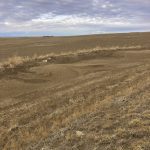
Tag Archives soil health

At Ag in Motion: New ‘Soil Champions’ team to promote soil health
'Societies live and die by soil'

Balance micronutrients and macronutrients in your fields for best possible outcomes
Macronutrients are essential but only one part of the nutrient equation

Life as a regenerative ag producer is a mindset
And farmers and athletes have more in common than you’d think

Strategies to increase your field’s potential
A panel discusses the importance of soil structure, tile drainage benefits and using precision ag and conservation to increase farm profitability

Multi-million-dollar fund greenlights soil health projects
Eight projects to push soil health practices will get funding for the next five years

How to build healthier soil
Farmers discuss what works for them at Alberta Pulse Growers seminar

Nitrogen fertilizer management to reduce nitrous oxide emissions, Part 2
Adopt 4R practices appropriate for your farm’s crops, soils, landscapes and agro-ecological areas

Feds open up consultations for sustainable ag strategy
Producer groups to have reps on advisory committee

When wheels cause soil damage
Q & A with an expert

Les Henry: Fuzzy thinking about soils and agricultural performance
What constitutes sustainable on a farm depends on soil climatic zone and what is feasible for the area


